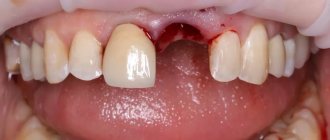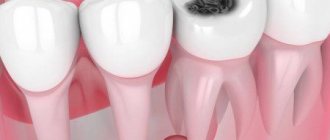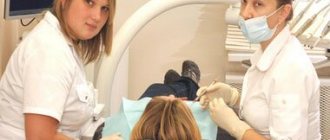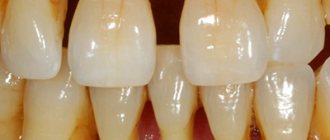A perirectal fistula is a deep pathological canal (fistula) connecting the source of inflammation (tumor or abscess) with the lumen of the rectum and the external environment.
In almost 9 out of 10 cases, a rectal fistula is formed after acute paraproctitis.
Rectal fistula and paraproctitis are essentially different phases of the same disease. In most cases, as a result of an autopsy (spontaneous or with the help of a surgeon or coloproctologist), patients develop a rectal fistula or chronic paraproctitis. The beginning and root cause of rectal fistula is the presence of an internal micro-opening in the anal canal at the level of the anal crypts. Pararectal fistulas can also be a consequence of rectal tuberculosis or trauma.
1
Consultation with a proctologist
2 Consultation with a proctologist
3 Consultation with a proctologist
Fistula is a dangerous disease that can be avoided if you pay close attention to the symptoms of paraproctitis. A long course of the inflammatory process with perirectal fistulas can lead to serious consequences. Significant deformation of the anal canal and perineum occurs, cicatricial changes begin in the anal sphincter, which leads to anal sphincter insufficiency. In addition, the disease is characterized by a complication that also occurs with chronic anal fissure - cicatricial stricture (narrowing) of the anal canal. If left untreated for a long time, the fistula may become cancerous.
Types of rectal fistulas
Depending on the localization of the process, there are extrasphincteric, transsphincteric, intrasphincteric, rectovaginal fistulas of the rectum.
Intrasphincteric fistula (the fistula canal is located in the subcutaneous layer along the edges of the anus) is the simplest type of fistula, the initial stage of the disease, detected in 25-30% of cases. It has a direct course, the cicatricial process has not yet appeared.
A transsphyctic fistula passes partly through the sphincter, partly through the tissue. They make up more than 40% of the total number of identified fistulas. In the fistula tracts there are branches, purulent pockets, and scar processes develop in the surrounding tissues.
An extrasphyctic fistula is located deep in the skin layer, goes around the external sphincter of the rectum and opens on the skin of the perineum.
A rectovaginal fistula is formed between the lumens of the rectum and vagina.
Degree of complexity of rectal fistula
The mild degree is characterized by the presence of a direct fistula tract, the absence of cicatricial changes, infiltrates and pus.
Moderate degree: scar formation occurs near the internal opening of the fistula tract.
Moderate degree: a narrow opening is formed in the entrance fistula canal, there is no pus or infiltrates.
Severe degree , characterized by the appearance of multiple scars and the appearance of ulcers and infiltrates.
General information
Fistula , fistula (from Latin this word is translated as “tube”) is a channel that connects hollow organs to each other or to the external environment, or connects a tumor to a cavity or surface of the body. Typically, a fistula looks like a narrow canal covered with epithelium .
It is customary to distinguish between fistulas that appeared as a consequence of certain pathological processes, as well as fistulas as a consequence of surgical intervention carried out in order to drain the contents of a certain hollow organ.
Clinical manifestations of rectal fistula
Typically, patients complain of the presence of a fistula (wound) on the skin in the anus. Due to the discharge of pus and ichor, the patient has to wear a pad and perform water procedures several times a day. The discharge can cause itching and irritation on the skin.
Symptoms of rectal fistula
Symptoms of rectal fistula may be as follows:
- Formation of a wound in the anal area;
- discharge of blood, ichor from the wound, unpleasant odor;
- soreness, redness and irritation of the skin;
- compactions with pus along the rectal fistula;
- unstable general condition of the patient: restless sleep, irritability;
- disturbances of urination and stool.
Paraproctitis: insidious fistula and false shame
This disease is one of those that people are embarrassed to discuss with friends and acquaintances. Moreover, the visit to the doctor is delayed from day to day. What can I say - it’s a shameful place, and that’s all... The disease is insidious with both severe physical pain and moral suffering. But this, unfortunately, is not all - without timely treatment, paraproctitis can poison a person’s life for many years, ultimately resulting in very dire consequences. And all because it was once awkward to cross the threshold of a proctologist’s office.
Anatoly Ivanovich Vanin, the head of the proctology department of the polyclinic of the Medical Center of the Administration of the President of the Russian Federation, Candidate of Medical Sciences, tells us why paraproctitis is dangerous and how to cure this disease - successfully and without false shame.
“Let me remind you that “para” in Greek means near, around, and proctitis is inflammation of the mucous membrane of the rectum,” said A.I. Vanin. — Thus, paraproctitis is an inflammatory disease of the tissue surrounding the rectal area, the lower part of the rectum.
The main reasons are stress, a decrease in the body's immune defense, a sedentary lifestyle, excessive use of antibiotics, severe hypothermia, nutritional errors, most often dry food, on the go, and as a result - constipation or, conversely, loose stools. Paraproctitis occurs regardless of age, but more often in men, because they smoke a lot and drink often. However, recently more and more women and girls are becoming ill: the desire to wear tight-fitting trousers, especially jeans made of thick, coarse fabric, as well as underwear, which, cutting into the crotch, injures the skin, is affected. Such abrasions become susceptible to infection, including viral infections. When hypothermia occurs - this is when girls flaunt in short skirts and thin tights in cold weather - herpes appears, which also provokes paraproctitis. Elderly people usually suffer from chronic paraproctitis if they suffered an acute form of the disease in their youth.
How does the disease occur? In the lower part of the rectum (in the anus) there are mucous glands that moisten the surface of the intestine with their secretions, facilitating the exit of feces if it is dry. With constipation, the mucous membrane is damaged, abrasions and cracks form, which become infected. Let me note that one gram of feces contains millions of units of different flora. This is where all the trouble begins.
The same thing happens when the stool is liquid - the acidic mass causes loosening of this area, also with possible infection. And even with normal bowel movements, something similar is possible - there seem to be no special complaints, but the body is weakened, and then the person just ate hot sauce, mustard, horseradish. The mucous membrane instantly becomes irritated and burns occur. The disease then develops according to a well-known scenario: the infection, along with inflammatory manifestations, spreads to the perirectal tissue - the connective tissue surrounding the rectum.
Paraproctitis begins with itching and slight discomfort in the anal area, then the disease gains momentum, purulent streaks form, which can turn into various fistulous forms and break out to the surface of the skin. If there is no breakthrough, the purulent mass comes out along with mucus and other unpleasant putrefactive discharges through the anus. Acute paraproctitis develops suddenly: the temperature rises, sharp pain appears in the rectal area, giving no rest, and after a sleepless night the person consults a doctor. True, there are erased forms of the disease - the patient does not seem to complain of severe pain, but the inflammatory infiltrate is palpable. In this case, to make an accurate diagnosis, you need to do an ultrasound, computed tomography or magnetic resonance imaging. A blood test alone is not enough, since the picture may be normal, although leukocytosis is sometimes observed.
In the chronic form of paraproctitis, fistulas do not heal for a long time. And then smears are taken from the patient to determine the cause of this protracted process, since the fistulous form of chronic paraproctitis can be caused by tuberculosis, syphilis, cancer, Crohn's disease, and other diseases. But more often the banal fistulous form is affected - with the release of E. coli and pus.
There are also internal incomplete fistulas, when the infection enters the anal fissure. Inflammation of perifocal tissue leads to abscess formation. The pus cannot come out due to the very dense thick skin. In this case, it is necessary to open and drain the abscess. If pus comes out through the internal opening of the fistula, then the discharge comes from the anus. Fistulas are located differently in all patients. In some - 2-3 cm from the anus - they can be felt with your fingers, seen in the mirror, in others - in the upper parts of the rectum.
The most common treatment for paraproctitis is ichthyol ointment and suppositories. They reduce tissue tension, relieve pain, help patients adapt to their condition; some even refuse surgery.
Initially, we try to puncture the abscess - release the pus, and then relieve the inflammation. The fistula is washed with a 1% dioxidine solution, and at the same time the patient is prescribed an anti-inflammatory drug - sumamed (0.5 g once a day for 3 days in a row). Fistula lavage is performed on an outpatient basis. Typically, after three procedures, the fistula closes in most patients. This is followed by taking medications that support the immune system.
But it happens that the fistula remains, however, without obvious purulent discharge. Treatment continues at home. Sitz baths are recommended: 1 tbsp. spoon of sea salt and baking soda per 5 liters of warm water. The duration of the bath is 10 minutes. Such procedures help the discharge of pus and clean the fistula well. After the bath, suppositories or ultraproct ointment are introduced. You can make microenemas from mumiyo: dissolve 1 tablet in 0.5 cups of hot water, administer warm.
I’ll tell you about one amazing case of recovery, which was helped by... a honey fair organized by Moscow Mayor Yuri Luzhkov in Manege. The patient came to us for procedures for a whole month, and to no avail: there was no pus, but the fistula remained. Here we just received information from this fair about the healing properties of sweet clover honey. They began to give the patient microenemas - 1 tbsp. a spoonful of honey in 0.5 cups of water. And everything healed in two days. Just a miracle!
I must note that such enemas - both with honey and with propolis oil solution - are very effective. The intestine even begins to squelch with pleasure: she likes warm, sweet things so much! Microclysters (1 tablespoon per 0.4-0.5 glasses of water) are done at night, and in the morning after stool, UltraProct suppositories are administered.
Sometimes you have to wait a long time for the abscess to break through. Then we recommend using the same ichthyol ointment, cakes made from baked onions, potatoes, and carrots. They help the fistula break through and pus drain. The patient chooses which flatbread is better, as they say, “at random” - whichever works more effectively, he “cooks” from it.
When all methods of conservative treatment have been exhausted, but the disease does not go away, we refer the patient for surgery, of course, if there are no contraindications. It is called Gabriel's operation, named after the surgeon who first performed it: a speculum is inserted into the anus, the mucous gland and fistula are excised. The treatment is very radical. True, scars appear after it, and even with hard stool, the lack of mucus causes certain inconvenience. Therefore, we try to injure this area as little as possible and, if possible, operate in extreme cases. It is better to use folk remedies and be observed at the clinic for a year. If the fistula heals, you can forget about the operation for decades.
However, frequent recurrences of the fistula are a big risk factor for oncology. Therefore, the patient must undergo an annual medical examination or examination by a surgeon. As a rule, such prevention is justified. During this period, one should not forget about maintenance therapy: make baths, lotions, pads, microenemas, follow a diet, especially for those who suffer from constipation and hemorrhoids. Here are some recommendations.
- As a laxative, drink 1 glass of freshly prepared carrot juice with pulp on an empty stomach. For hemorrhoids, steam and drink carrot tops as tea.
- Juice from ripe rowan berries - 0.5 cups of Zraz a day before meals. Apply the remaining pulp to the hemorrhoids in the form of a compress.
- Drink a mixture of carrot and spinach juices in a ratio of 10:3 3 times a day before meals. The daily dose is 2 glasses.
- Sauerkraut brine - 1 glass 3-5 times a day before meals for hemorrhoids, constipation and heavy bleeding.
- Grate raw potatoes with peel, squeeze out juice, 1 tbsp. Inject a spoonful of juice into the anus with a syringe at night. The course of treatment is 10 days.
- Consume 100-150 g of boiled red beets on an empty stomach for chronic constipation and digestive disorders. For spastic constipation, a salad made from boiled beets and vegetable oil is useful - also on an empty stomach.
- For prolonged constipation, beet broth is used for enemas: pour 20 g of beets with 2 glasses of water, boil for 30 minutes.
- Pour boiling water over washed prunes in the evening. In the morning, eat a few plums on an empty stomach and drink the resulting liquid (without sweetening it) as a laxative.
- Warmed water from pickled lingonberries, taken on an empty stomach, is also a good laxative.
Badger and bear fat are effective in treating the rectum. Turundas or tampons should be soaked in fat and inserted into the anus overnight. If the mucous membrane of the anal canal is erosive, you can make thin sticks from fresh potatoes rich in starch. It envelops well, relieves irritation, heals erosions and cracks in the anal rectum. The sticks are inserted overnight.
Now - about mucous glands and mucus. I am convinced that the removal of any organ, including mucous glands, is an intervention in nature: there is nothing superfluous in the body. However, if the glands are constantly inflamed, their excision is a necessary and necessary measure.
Sometimes patients complain of copious mucus secretion. However, in this way not only inflammatory processes of the mucous glands can manifest themselves, but also concomitant diseases. For example, the growth of mucous membrane in the intestine, like a villous tumor, which produces up to one liter of mucus per day, secreted through the rectum. And although the tumor is benign, the body, in fact, begins to rot. Villous tumors can occur in the rectum and in the overlying intestines. The literature describes a case where the colon was completely affected by it. Therefore, copious mucus discharge should definitely alert you. Often, patients are frightened mainly by the release of blood.
Excessive mucus, when it, as we say, comes out in “buckets”, and with blood, can also occur with ulcerative colitis, most often caused by stress and other reasons. Patients with ulcerative colitis should be observed by a gastroenterologist for at least 10 years: colorectal cancer may develop.
Concluding the conversation, I will say that the specialty of a proctologist is now, alas, gaining power and strength, since many of our diseases depend on the state of medicine and society, and a person’s attitude towards his health. Of course, we are far from Japan, where they thought of, for example, installing special sensors on toilets that detect the presence of blood or mucus in flushed feces. A dispatcher is sitting in some Japanese housing complex and sees on the instruments: in such and such an apartment one of its residents has intestinal problems. He comes and says: someone is sick. And doctors begin to check the whole family.
Many of us are embarrassed to see a doctor in a timely manner - they delay until they press properly. Why be ashamed? If there is slight itching or mucous discharge, you need to go to the clinic. As a last resort, at least tell your loved ones about the unpleasant sensations - this will make it easier to overcome false shame and begin treatment. Paraproctitis and its consequences - fistulas - are completely curable when time is not lost in doubt and torment.
Diagnosis of the disease
A conversation with the patient helps an experienced proctologist understand the nature of the disease. Already during the examination, the doctor may detect one or several holes near the anus, when pressed, the purulent contents of the rectal fistula are released.
1 Laboratory diagnostics in MedicCity
2 Stool test for blood
3 Colonoscopy
The patient is prescribed an examination, including the following types of tests:
- blood chemistry;
- general blood and urine analysis;
- microbiological analysis of purulent discharge to identify the infection that caused it;
- probing, which determines the length and tortuosity of the pathological canal;
- irrigoscopy (x-ray examination of the colon);
- ultrasonography;
- colonoscopy (endoscopic examination of the large intestine);
- fistulography (x-ray examination of fistulous tracts using a contrast agent);
- sigmoidoscopy (instrumental examination of the rectum and sigmoid colon);
- CT scan;
- sphincterometry (objective assessment of the functioning of the rectal sphincter).
Diagnosis of a fistula on the gum
A visual examination of the patient will be sufficient to make a diagnosis. To clarify the condition of the diseased tooth and accurately identify the source of inflammation, an x-ray examination may be required.
With its help, it will be possible to determine the depth of the fistula, the degree of growth of the granuloma or cyst, the extent of damage to the periosteum, etc.
The doctor must make a differential diagnosis with diseases such as gum cyst, wen, purulent tissue inflammation. Self-diagnosis of fistula is unacceptable.
Treatment of rectal fistula
Don’t waste time; at the first symptoms of proctological diseases, consult a coloproctologist! This way you can avoid complications, the most dangerous of which is the malignant degeneration of chronic paraproctitis (fistula)!
The treatment regimen for rectal fistula is determined by a coloproctologist as a result of an examination, but today these are only surgical methods. They allow you to radically remove the entire fistula tract and cure the patient of rectal fistula once and for all. During the operation of excision of a rectal fistula, as a rule, concomitant diseases are removed - hemorrhoids, anal fissure, etc. Thus, treatment for a rectal fistula allows the patient to get rid of a whole list of unpleasant diseases in one fell swoop.
Possible complications
Many people do not understand why a fistula on the gum is dangerous, so they do not use the services of a dentist, believing that the disease goes away along with the pain. This is completely wrong: despite the comfortable sensations, bacteria still continue to multiply in the affected area, and this leads to unpleasant consequences that are life-threatening:
- tooth loss;
- sinusitis, sepsis (blood poisoning);
- the appearance of cysts;
- suppuration in the brain;
- the formation of polyps and ulcers on the heart valves;
- abscess of facial and cervical tissue;
- destruction of the jaw.
If the condition reaches such pathologies, then the treatment will be long and painful.
Surgery to remove rectal fistula
To better prepare for surgery, your doctor may prescribe antibiotics and topical pain relievers. During the operation to remove a rectal fistula, the following manipulations are performed: excision of the rectal fistula, opening and cleaning of purulent pockets, suturing the sphincter, moving the rectal mucosa to eliminate the internal hole.
1 Surgery to remove rectal fistula
2 Surgery to remove rectal fistula
3 Surgery to remove rectal fistula
The choice of surgical treatment method depends on the type of fistula, its location, the degree of scarring, the presence of ulcers and infiltrates.
Prevention of fistula
To ensure the prevention of gum fistula, it is important to eliminate all dental problems in a timely manner and do this only with the help of professional specialists. There is a general rule that every person should have a dental check-up twice a year. Also, at a certain frequency (once every few years), it is necessary to take diagnostic photographs of teeth that were previously treated, in order to prevent possible complications as early as possible.
In addition, to prevent the formation of fistulas, it is important to maintain the proper level of immunity.
Treatment methods
Conservative (non-surgical) therapy is rarely effective; most genitourinary fistulas require surgery to close the opening. Surgery is usually performed via transvaginal, laparoscopic or direct access, sometimes using robotic surgery.
As a conservative method, drainage of the bladder is sometimes performed for a long time (from ten days to 6 weeks), which leads to closure of the fistula; it is used more often for punctate, timely diagnosed vesicovaginal fistulas. Plastic surgery aims to normalize the function of the urinary organs and restore urination naturally. Only patients with recurrent malignant tumors are not subject to surgical correction. The founders of the surgical treatment of vesicovaginal fistulas are Sims and Trendelenburg, who were described by them more than 100 years ago. Treatment is based on excision of the scarred edges of the fistula, extensive mobilization of the tissues of the vagina and bladder. Then separate suturing is performed with mandatory displacement of the suture line relative to each other and long-term drainage of the bladder to prevent suture failure.
Long-term preoperative preparation (local anti-inflammatory treatment, antibacterial therapy if necessary) is the key to successful surgery. It includes, in addition to all of the above, removal of necrotic tissue, fibrinous deposits and ligatures, washing the vagina with antiseptic solutions and introducing tampons with solutions of antiseptic and anti-inflammatory agents, the use of enzymes to accelerate tissue cleansing, instillation of antiseptic solutions and stimulants of regenerative processes into the bladder, treatment of the perineal skin and hips with disinfectants, followed by lubrication with indifferent creams to eliminate dermatitis. If necessary, use hormonal creams. When the fistula is located directly near the mouth of the ureter, catheterization is performed before surgery. Debridement is always necessary, but unfortunately it is rarely complete due to the fistula, which maintains urine infection. The need for careful preoperative preparation is due to the fact that plastic surgery in the context of an ongoing inflammatory process is dangerous due to the development of postoperative complications and relapses.
Fistuloplasty is performed using various surgical approaches. When performing operations for vesicovaginal fistulas, the transvaginal approach is considered the most physiological, but other approaches are also legitimate (transvesical, transabdominal, laparoscopic), each of which has its own indications and contraindications. For example, plasty of vesicovaginal fistulas via transvesical access is absolutely indicated for:
- fistulas located near the mouths of the ureters, preliminary catheterization of which is impossible;
- involvement of the ureteric orifices in the cicatricial process or their displacement into the lumen of the fistula;
- combined ureter-vesico-vaginal fistulas;
- combination of vesicovaginal fistula with obstruction of the pelvic ureters;
- radiation stenosis of the vagina.
In addition to careful preoperative preparation, the success of any operation, especially plastic surgery, also depends on proper management of the postoperative period. All patients after plastic surgery for a disease such as genitourinary fistula are recommended to abstain from sexual activity for 2-3 months.
For ureterovaginal fistulas, the choice of reconstructive surgery method depends on the location of the damage to the ureter and its close proximity to the bladder. Considering the fact that in most cases, as a result of gynecological operations, the ureter is damaged near the bladder, it is most advisable to perform ureterocystoneostomy. Based on experience, the effectiveness of surgical treatment of ureterovaginal fistulas reaches 93%.
Surgical correction of urethro-vaginal fistulas is a difficult task. This is due to the small size of the organ, and therefore, after excision of scarred tissue, a large defect is formed, when sutured, tissue tension occurs and a stricture of the urethra may develop. Its defect is usually covered with its own tissues, a flap from the bladder. In addition, it is possible to use a Martius flap, a vaginal mucosa flap, or a buccal mucosal flap. Sometimes the fistula is located in the proximal urethra; the doctor’s task is not only to close the defect, but also to restore sphincter function.
Possible postoperative complications:
- Re-formation of the fistula;
- Damage to the ureter or intestines;
- Vaginal contraction
The Andros Clinic provides patients with the opportunity to receive highly qualified care, undergo the necessary diagnostics to clarify the diagnosis and, if necessary, receive surgical treatment from well-known specialists in Russia. Thus, we can say that, given the severity and social significance of the disease, this is a second birth for the patient.
Highly qualified specialists of the Andros clinic widely use the latest minimally invasive surgical techniques in treatment, which reduces blood loss to a minimum, shortens recovery time, thereby improving the quality of treatment.
Consultation with a urogynecologist, an individual approach to comprehensive detailed diagnostics, detailed processing of laboratory, instrumental and urodynamic examination data and treatment of each patient is provided in accordance with the standards of leading European and American clinics.
What does it come from?
Gram-negative, anaerobic bacteria, streptococcus aureus, staphylococci, some types of fungi, etc. can act as an etiological factor. Fistulas form for the following reasons:
- tuberculosis infection;
- Crohn's disease (severe chronic disease of the gastrointestinal tract);
- actinomycosis - chronic diseases resulting from infection with a fungus;
- complications after surgery (for example, a ligature fistula is formed due to suppuration around the sutures on the blood vessels);
- chronic ENT diseases;
- the presence of sequestra - dead areas of bone;
- injuries of peri-intestinal tissue;
- dental pathologies (periodontitis, caries);
- paraproctitis - inflammation in the crypts of the anal canal of the intestine;
- neoplasms (benign and malignant) on the rectum;
- suppuration around foreign bodies inside the body (for example, a bullet or its fragments).
2. Reasons
In most cases, purulent-inflammatory processes with tissue melting lead to the formation of genital fistulas. Such fistulas can connect the vagina with various parts of the small and large intestines, and with the perineum.
Vaginal-rectal fistulas often become the result of traumatic obstetric and gynecological manipulations and operations, proctological invasive procedures, and other types of trauma.
Genitourinary fistulas (vesico-, uretero- or urethrovaginal) can form as a result of mechanical (violent), obstetric, chemical, or electrical trauma.
Visit our Gynecology page
Features of the recovery period
When a diagnosis of “vesico-vaginal fistula” is made, the patient, with consent, undergoes surgical intervention - fistuloplasty; in the presence of stones, surgical intervention is supplemented with cystolithotomy. When the expected results are achieved (restoration of adequate urodynamics of the lower and upper urinary tract), patients undergo rehabilitation measures. In case of unsatisfactory results of treatment, complications that have arisen are treated, or sanitation of the genitourinary organs is carried out and, if necessary, repeated surgical treatment. A follow-up examination is carried out 3 months after surgery, a year later and annually thereafter.
| Rehabilitation activities | Recommendations |
| Hygiene | Carefully monitor vaginal hygiene, using products that do not disturb its microflora |
| Diet | The diet should be balanced, without foods that can cause bloating and constipation. |
| Medicinal | The use of special tampons and ointment dressings for rapid healing and relief of pain and inflammatory symptoms in the postoperative period |
What does sleep mean?
Pus in a dream is a positive sign that often foretells good luck, joy and wealth. But in order for the meaning of the dream to be more specific, when interpreting it you need to take into account all the details of what you saw.
If you dreamed that liquid was coming out of a wound, then you will soon remember old grievances. But if you are wise and can let them go, then luck will smile on you in the near future.
When a pimple with liquid bursts on its own in a dream, then in life you will not need to make much effort to achieve what you are striving for.
Purulent acne on different parts of the body is also interpreted differently. For example, a pimple with pus on the leg portends a long journey and an interesting adventure. And seeing an abscess on your hand means realizing your hidden talents.
- A purulent abscess on the back - you are doing unnecessary things.
- Seeing a pimple with liquid on the stomach means rushing things.
- If you dream of purulent pimples on your neck, you will be appreciated.
- Pus from the finger - to a well-paid job.
- Dreaming of an abscess on the nose means a love affair.
Did you have a dream?
Vanga's dream book: deceased grandmother We recommend: Why do you dream about acne?
As the dream book writes, pus in the eyes can be seen when they are trying to fool you. But your vigilance and sober outlook on life will not allow a potential deceiver to leave you in the cold. And if you notice green pus before your eyes, then expect pleasant sights and good news.
An abscess on your face oozing pus is a sign of your prudence and self-confidence. And if it has formed in your mouth, then you have a talent for solving problems through conversation. Even the most ardent opponent, after listening to your speech, will not give up, but will quietly step aside.
Positive interpretation
In the old days, it was believed that pus foreshadowed wealth and prosperity.
Getting dirty with this liquid in a dream means getting money in reality and improving your well-being. A burst abscess has the same meaning, which can also predict the resolution of a haunting problem. And now most dream books are unanimous in the opinion that pus in dreams is a harbinger of imminent profit. However, this interpretation has its limitations. It is correct if there is no blood in the pus. Otherwise, the dream will have a negative meaning (this is discussed in detail below).
If you dreamed of an abscess on another person's body, it means that you will help someone solve a problem.











